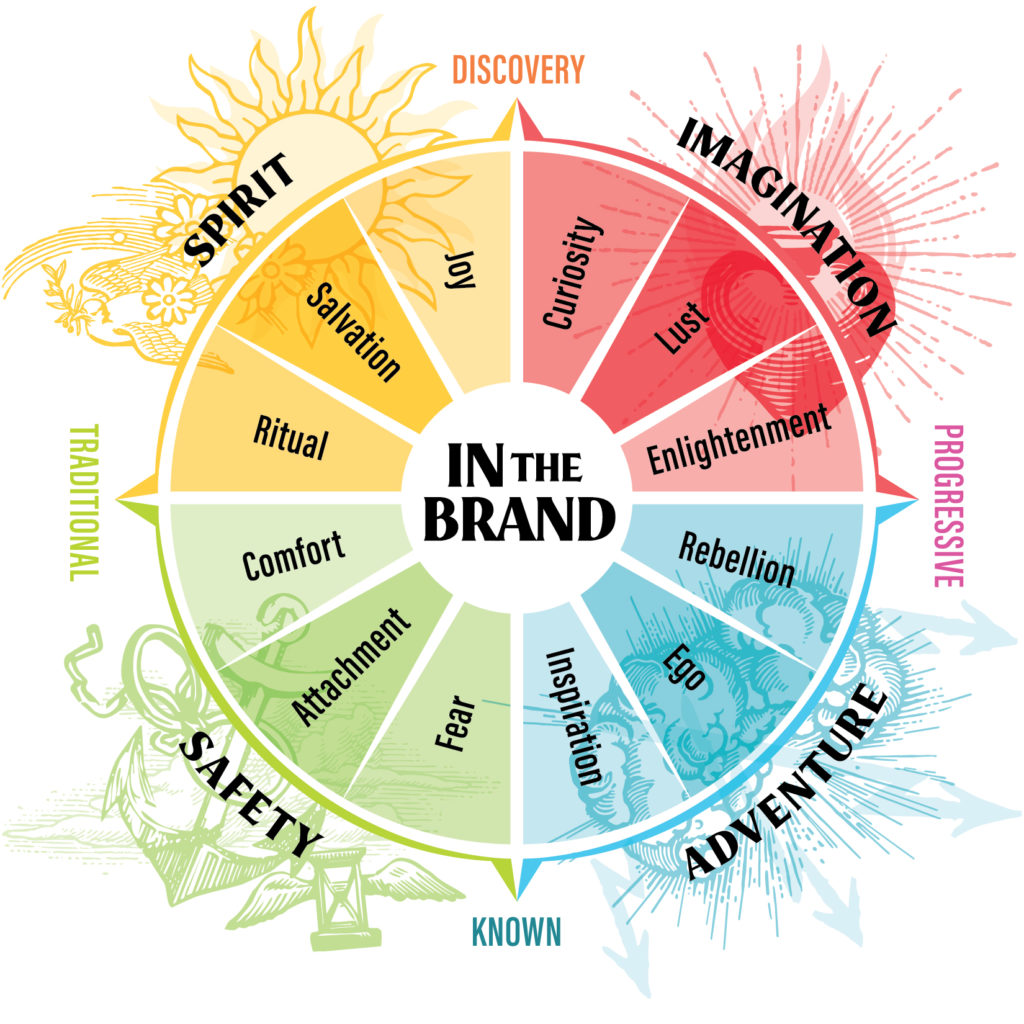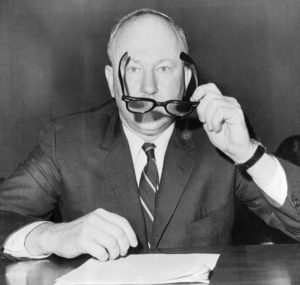
Brands are influencing you. They’re consistently making appeals to your emotions using subconscious suggestions. It could be considered coercion, but in reality it’s a win-win for both the brand and the believer who buys, shares and loves it.
Does wearing a new pair of Addidas make you feel confident?
Does buying the latest iPhone make you feel empowered?
Objects themselves rarely transform us. Instead, it’s brands themselves working a kind of special alchemy. Branding turns objects into feelings. But brands don’t just tell us how we should feel about their products or services— they help us confirm how we feel about ourselves.
How do brands delicately tickle your fancy?
Where does your deep belief in brands come from?
Companies who are successful at branding are achieving levels of business success that were unimaginable to the prior generation. Let’s explore the secret behind today’s most powerful global businesses. They’re communicating brands on a level deeper than words– they’re speaking directly to your heart.
Brands make their way inside you. Let’s make our way inside the brand.

The Feel-Wheel is a visual representation of how brands function. It begins with your sense of perception. Brands position themselves using the basic human need to understand. They force you to react with a feeling, which helps make it memorable. When there’s an associated feeling with your brand experience, it aids in forming habitual, repeated emotional reactions. This is how long-term brand loyalty is forged.

The Brand Feel-Wheel is a graphic illustration of the kinds of feelings that brands tap into, and what that means for who they are and the experience they promise.
Customers make two subconscious, initial judgements. These are represented by the horizontal and vertical axis. They define how brands are perceived using a four-quadrant analysis.
• The horizontal axis represents where a brand falls on a range of traditional to progressive. Is the brand conservative or pushing boundaries?
• The vertical axis refers to the brand offering. Is the offering something known and familiar, or something new to discover?
The four quadrants represent the core brand positions. All brands exist in a realm, one that we’re brought into with strategic written and visual communications.
– Progressive-discovery brands inspire a sense of imagination.
– Progressive-known brands inspire a sense of adventure.
– Traditional-known brands inspire a sense of safety.
– Traditional-discovery brands inspire a sense of spirituality.
Each quadrant has three emotional triggers that brands tap to ensure they are understood. These pluck the heartstrings of their audience and make their position clear. Complimentary triggers across the wheel are used to sharpen the distinction and increase persuasion.
Brands strategically embed emotional triggers to ensure that a targeted audience perceives them the same way. This “emotional engineering” improves a brand’s ability to consistently generate a predetermined reaction. It’s how brands lead a community of like-minded, devoted fans who instantly consider anything they suggest.
Knowing where you are on the Brand Feel-Wheel can help you individuate the emotion that your brand speaks to. Brands are complex and evolving organisms, and yours may have more than one feeling associated with it. Clarification of your brand’s emotional driver is what guides and shapes your story. It’s what separates companies from brands.


Branding as emotional manipulation is not a new idea. Way back in 1957, Vance Packard published his landmark book The Hidden Persuaders about the use of psychology in the advertising industry. Packard showed how successful companies use themes, symbols and stories to create meaning for consumers. These stories appeal to our driving motivations, promising to fulfill a deep emotional desire.
Packard realized that the result of the post-WWII economic boom was that people were no longer buying out of necessity or rationality. They began to consume based on feeling.
• In a crowded market of similar offerings, it’s not about what product works the best.
• Instead, market dominance is the result of what product tells the most impactful story.
Packard sums it up succinctly:
“Cosmetic manufacturers are not selling lanolin– they are selling hope. We no longer buy oranges, we buy vitality. We do not buy just an auto, we buy prestige.”
We buy based on feeling. It’s the brand that keeps us coming back for more.

Branding is just another evolution of the oldest art form on earth: storytelling. Branding is about finding the story that’s authentic, honest and relevant to who you are and who you speak to.
But words are fickle. While we may speak a common language, we don’t all share the same understanding. Powerful branding transcends the world of words and enters into the realm of meaning and feeling– the universal language that rests on the tip of our tongues and in the recesses of our brains. Brands that tap into feeling can tell their whole story in a few bold words and intentional visual cues. They resonate with us. It’s a sudden and impactful connection. It feels like magic.
Narratives relay information, but the right narrative makes you feel something. It can inspire action. Ghost stories make you turn on the light to find safety. A sad story might inspire you to take an adventure and lend a helping hand to someone in need.
Great brands rely on storytelling. They draw you in and make you believe by:
1. Playing into instinct: resonate with emotions so deep that their driving force in our lives is subconscious.
2. Provoking a reaction: add drama to narratives that speak directly to passionate desires and motivations.
3. Inspiring urgency: elevate the story with lessons that make it imperative for the listener to take action.

Packard wrote The Hidden Persuaders to warn the public: brands are watching and controlling us. He was highly suspicious of human psychology in advertising. But emotional branding isn’t the end of the world. In fact, it could be the beginning.
When brands appeal to emotions, they make meaningful statements about who they are and what they believe. They enter into communication with their audiences– the brand tells a tale, but it needs believing listeners to exist. If the story doesn’t feel real, the spell is broken. Brands must be authentic in order to tap into our inner desires.
Uncovering that authenticity and speaking it clearly is a challenge. It requires creativity, innovation and imagination. It gives companies a purpose and holds them accountable to deliver on their promises. The result is meaningful, memorable communication. Brands that make you think, make you feel, make you move. They change our minds, tickle our senses and leave us wanting more.

Brands aren’t going away– the power of digital communications are allowing brands to become more ubiquitous. We’re surrounded by messaging on every platform. It’s unavoidable. If we have to be bombarded by it all the time, I’d rather be bombarded by messaging that sparks my curiosity and tugs at my heartstrings. I’d rather live in a world of colors, inspiration and feeling. I’d rather live in the brand.
Are you in the brand?
>We’d love to find out